Two moving particles P and Q are 10 m apart at a certain instatn. The velocity of P is 8 m/sm making an angle of 30∘ with the line joining P abd Q and that of Q is 6m/s making an angle 30∘ with PQ as shwon in figure.
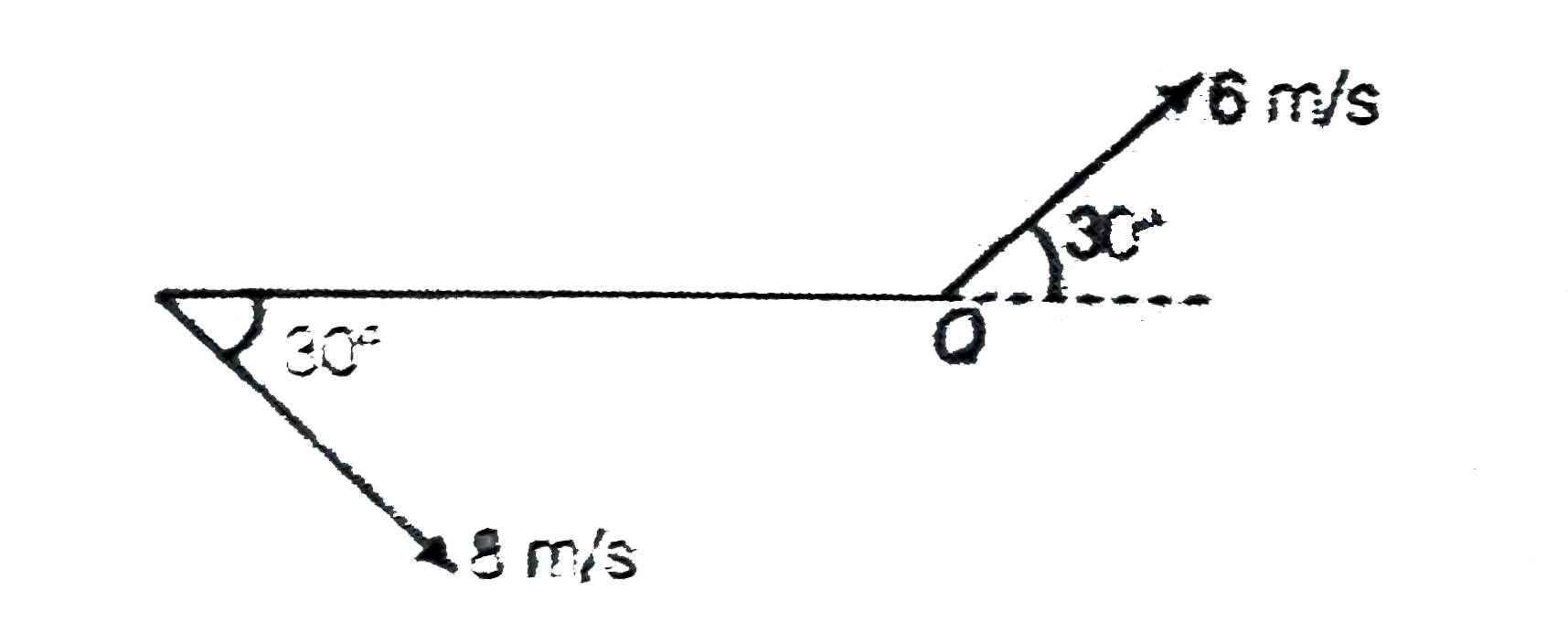
Then, angular velocity of P wiht respect to Q is
zero
0.1rad/s
0.4rad/s
0.7rad/s
(d) 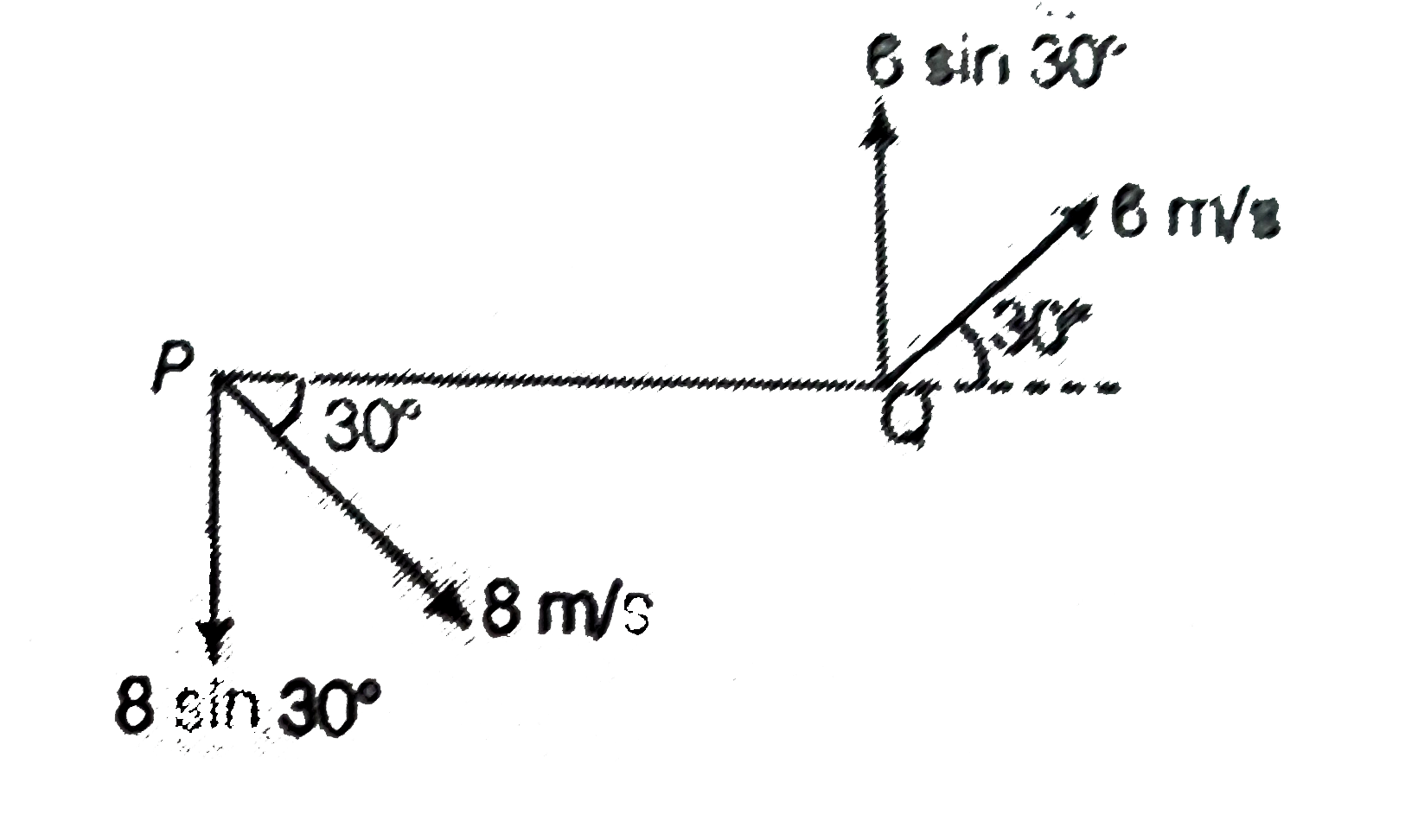
∴ωrel=8sin30∘+6sin30∘10
=0.7rad/s
Topper's Solved these Questions
Similar Questions
Two moving particles P and Q are apart at any instant. Velocity of P is 8m/s at 30∘, from line joining the P and Q and velocity of Q is 6m/s at 30∘. Calculate the angular velocity of P w.r.t. Q
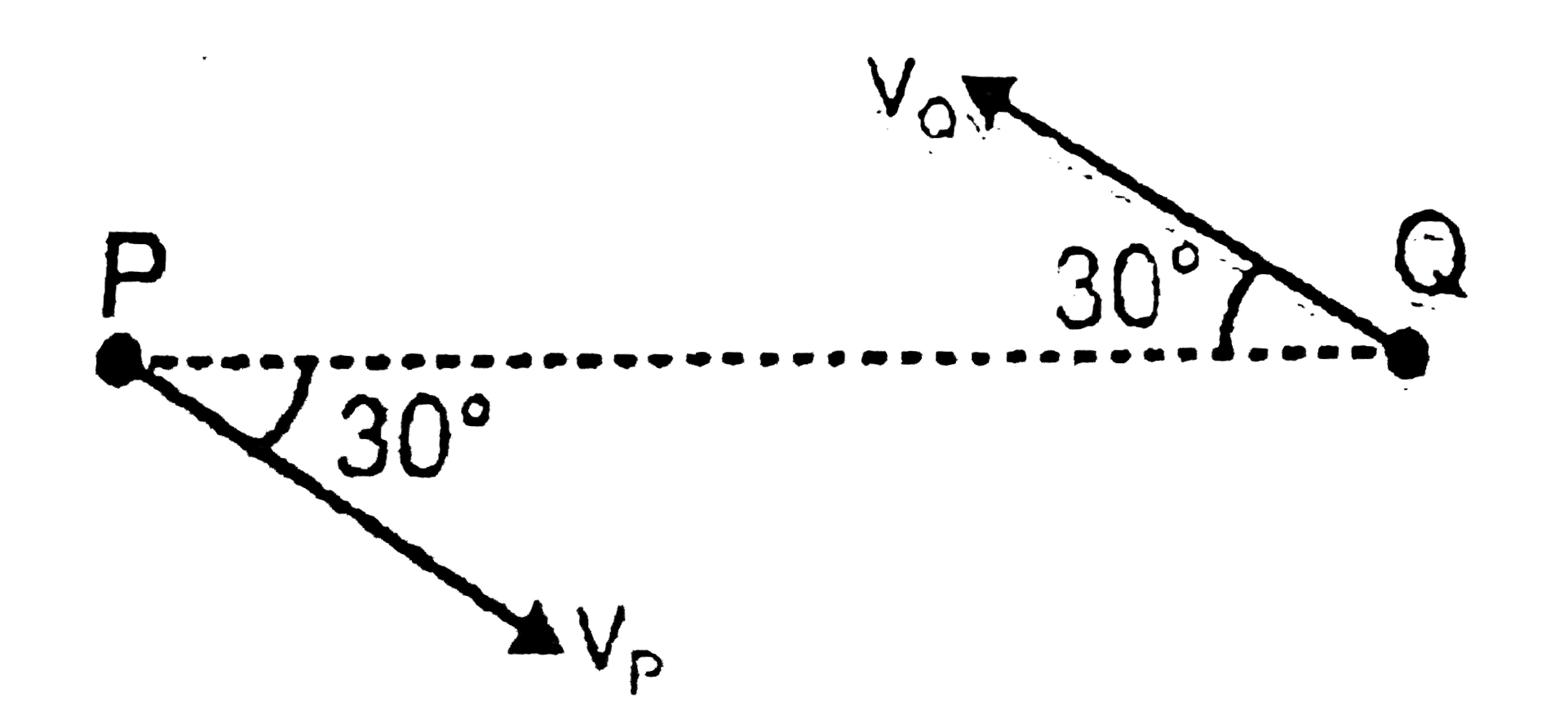
View SolutionA particle P is moving along a straight line with a velocity of 3ms−1 and another particle Q has a velocity of 4ms−1 at an angle of 30∘ to the path of P. Find the speed of Q relative to P.
View Solution
Knowledge Check
Two moving particles P and Q are 10 m apart at a certain instant. The velocity of P is 8 m/s making 30º with the line joining P and Q and that of Q is 6 m/s making an angle 30º with PQ as shown in the firuge .Then angular velocity of P with respect to Q is-
 A0rad/sB0.1rad/sC0.4rad/sD0.7rad/s
A0rad/sB0.1rad/sC0.4rad/sD0.7rad/sTwo particles P and Q are moving as shown in the figure. At this moment of time the angular speed of P w.r.t. Q is
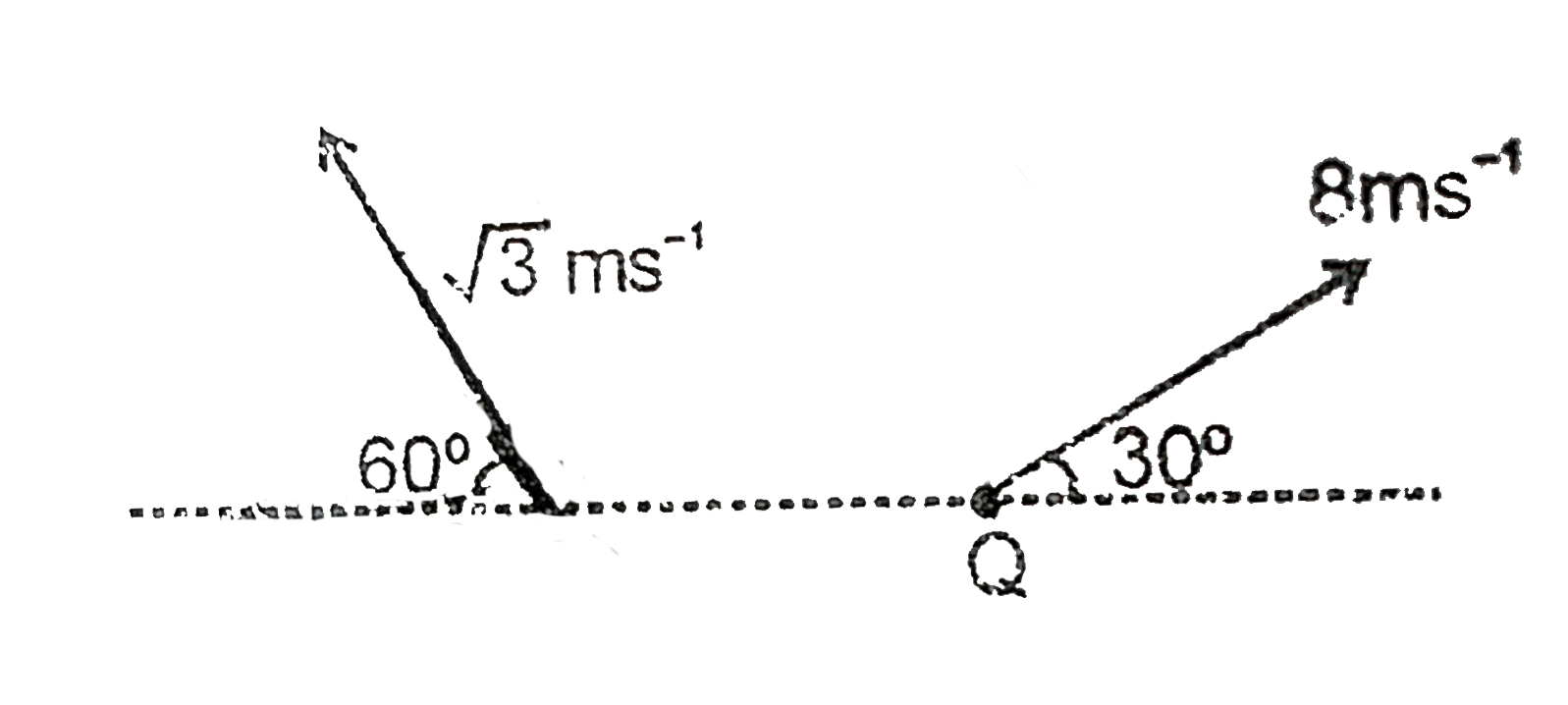 A5 rads−1B4 rads−1C2 rads−1D1 rads−1
A5 rads−1B4 rads−1C2 rads−1D1 rads−1The resultant of two forces P and Q is equal to √3Q and makes an angle of 30∘ with the direction of P, then P/Q=
A1B2C3D4
A 6 kg bomb at rest explodes into three equal pieces P, Q and R. If P flies with speed 30 m/s and Q with speed 40 m/s making an angle 90∘ with the direction of P. The angle between the direction of motion of P and R is about
View SolutionIn elastic collision between spheres P and Q of equal mass but unequal radii , move along a straight line. Which of the following may be correct after the collisions ? (i) P comes to rest and Q moves with velocity of P.
(ii) P and Q move with equal speeds making an angle of 45∘ each with original line of motion.
(iii) P and Q move with unequal speeds , making angles of 30∘ and 60∘ with the original line of motion , respectively.
(iv) P comes to rest:
View SolutionThe resultant of two forces P and Q makes an angle of 30∘ with P. What is the angle between P and Q, if the magnitude of the resultant is equal to Q√3 ?
View SolutionA ball A collides elasticlly with an another identical bass B with velocity 10 m//s at an angle of 30∘ from the line joining their centres C1 and C2 Select the correct alternative (s).
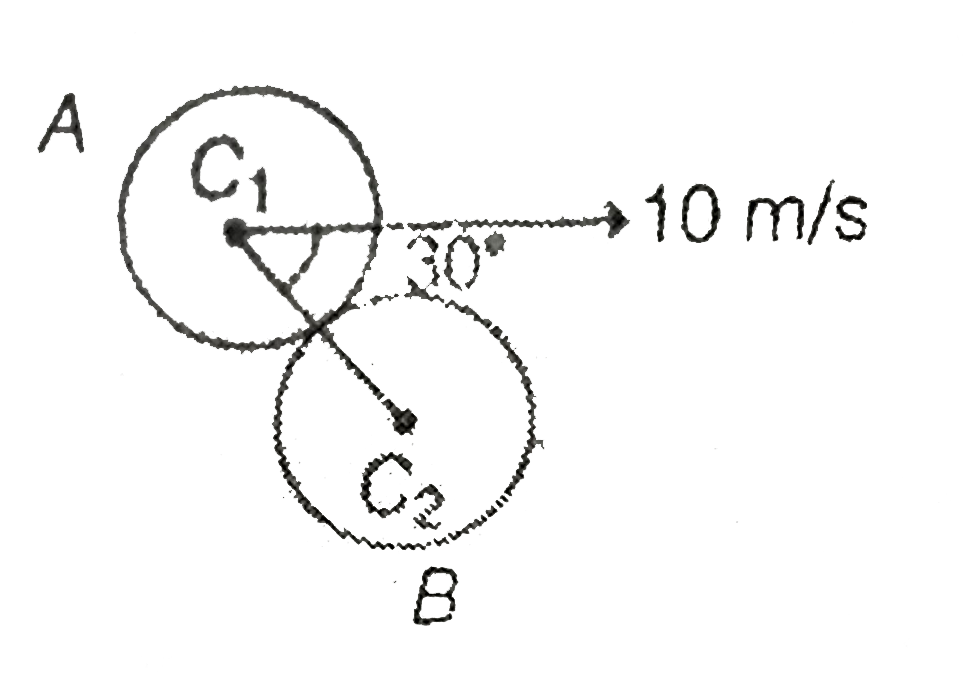
View SolutionThe resultant of two forces P and Q is at right angles to P, the resultant of P and Q' acting at the same angle is at right angles to Q'. P is
View Solution
